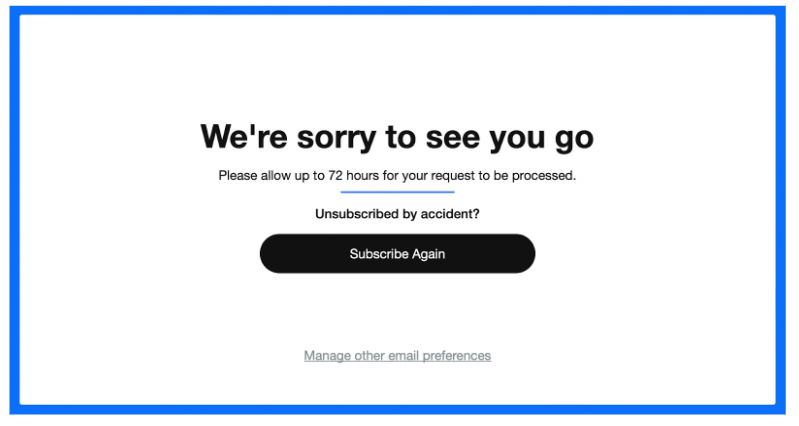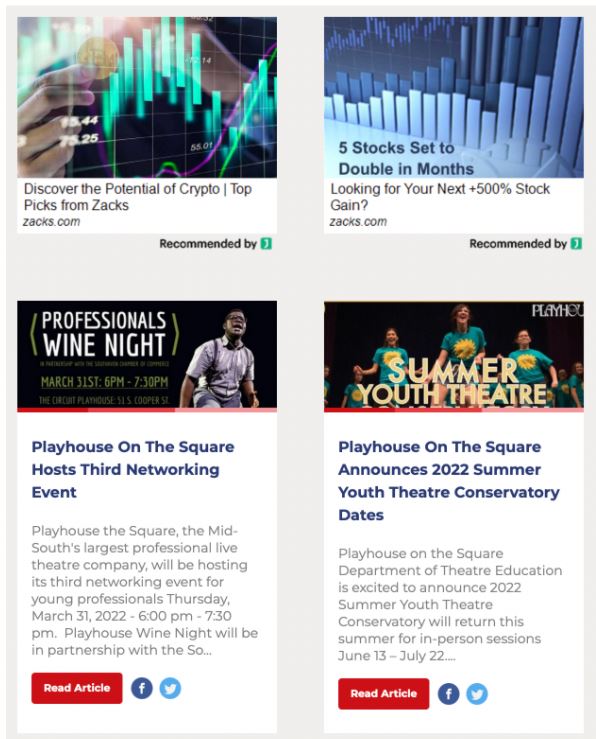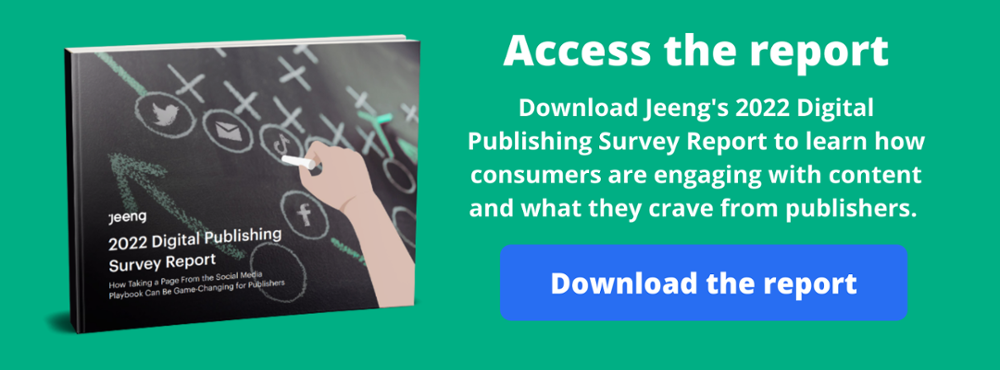The “Dear John” letter first emerged in the 1940s as a cheeky term for breakup notes women sent to their military boyfriends.
Commonly, these breakups occurred when women met other suitors—men who were home and could give these women the time and attention they needed.
As Howard Whitman wrote for the Chicago Daily Tribune in 1944, one of these letters might read: “Dear John: This is very hard to tell you, but I know you’ll understand. I hope we’ll always remain friends, but it’s only fair to tell you that I’ve become engaged to somebody else.”
Today, publishers are struggling with their own — albeit less severe — version of the “Dear John” letter: breakup emails from readers who are ending their subscriptions. These messages probably won’t take the form of heartfelt, handwritten notes, either. They’ll just be a link clicked or a box checked to “Unsubscribe,” maybe with the added bonus of a completed survey about why they chose to leave.

But really, we know why people are turning their backs on publishers they once committed to.
Readers want to feel special. With so many news channels and information platforms out there, they want to know if they sign up for content, they’ll receive personalized experiences that are tailored to their specific interests, needs, and pain points.
According to a 2022 study from Jeeng and Mantis Research, over half of U.S. adults want email newsletters to be personalized to their interests — up 21% since last year. 2/3 also say they’re more likely to subscribe to a publisher newsletter if it’s personalized to their interests — up from 60% in 2021.

Really, audiences want to feel like you’re invested in taking care of them and building a relationship. Otherwise, well, they’ll break out their “Dear John” letter and leave you for someone else — a.k.a. a publisher that can provide that one-to-one connection they crave.
So, are you tired of collecting “Dear John” letters or worried that they could be on the way if you don’t revamp your strategies soon?
We’ll outline tactics and tools you can use to nurture reader relationships and prevent subscribers from breaking up with your publication.
Engage subscribers with personalized content
The people have spoken. And they want personalized content — especially when it comes to email.
As our recent study found, among those who pay for a subscription to a digital publication or email, 42% do so because they want content that’s personalized to their interests. This commitment to personalization is even more prevalent among younger generations: 61% of millennials want personalized emails compared to 39% of baby boomers.

Evidently, publishers need to invest in personalization if they want to engage consumers and generate revenue. And they can do so by:
- Sending emails at just the right times. According to our report, 77% of US adults check their email several times per day and 98% check it at least once per day.
- Incorporating email into cross-channel personalization strategies. Build comprehensive, unified experiences across platforms to guide consumers along the customer journey and deliver value at each touchpoint.
- Steering clear of common pitfalls. Avoid bad personalization strategies like sending creepy or intrusive ads and retargeting audiences with antiquated data.
- Delivering real-time alerts that are relevant to each user’s interests. Over 75% of US consumers would like to receive breaking news updates from publishers, and most want to get those updates via email.
Build segmented audiences of targeted readers
How do publishers actually deliver these personalized experiences? By building targeted audience segments of subscribers based on their demographics, behaviors, and interests.
To do this, they have to:
- Gather first-party data from preference centers, email surveys, and actions across channels. In fact, every publisher should be building a robust first-party data strategy to prepare for the demise of the third-party cookie, which will shake up how they track and target audiences.
- Create target audience profiles for each user segment. They can craft content that appeals specifically to these subscribers, taking into account their values, pain points, and buying behaviors.
Deliver relevant native ads
If you want email subscribers to stick around, you don’t just have to personalize your organic content. It’s also important to deliver personalized email ads so you can monetize your newsletters while providing value to your readers.
As our study found, 69% of consumers say they’ll click on an ad in an email newsletter if it’s interesting or relevant to them. Again, millennials are more likely to do so than other generations.
So, if you’re not monetizing these audiences yet, you’re missing out on a valuable revenue channel. After all, email can support a range of ad formats like text, display, and image ads.
Email is also a great fit for native ads, which integrate seamlessly with their surrounding content, as in this newsletter from BroadwayWorld:

Woo your subscribers with customized experiences
Stop collecting “Dear John” letters and keep those subscriber relationships intact by delivering targeted, personalized experiences that delight your audiences.
In fact, with third-party cookies going away and consumer preferences changing, now’s the perfect time to rewire how you think about email personalization altogether. With the right strategies, you can capitalize on these changes and unlock new ways to drive revenue across channels.
That’s where Jeeng comes in. Our powerful AI uses first-party data to automatically send the right message to each reader at the right time — giving your subscribers the “just for you” experiences they deserve.
So you can retain the audiences you’ve worked so hard to acquire and bring back the ones you might’ve already lost.
Ready to get started? Contact Jeeng to learn more.
Download Jeeng’s 2022 annual digital publishing consumer report to learn more about engaging your audience with first-party data and personalized content.


